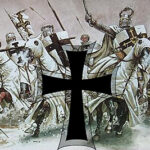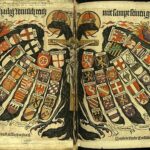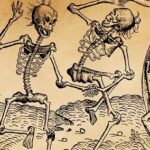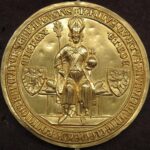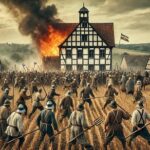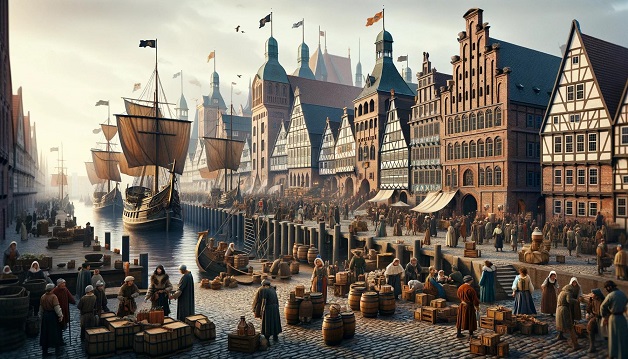
Picture a medieval German merchant ship—its hull full of grain, furs, and salted fish—sailing toward a bustling port on the North Sea. On shore, a trading hall bearing the insignia of the Hanseatic League awaits. This wasn’t just a commercial transaction. It was part of a network that shaped the economy, diplomacy, and identity of northern Europe.
From the 12th to the 17th centuries, the Hanseatic League—a confederation of cities and merchants—rose to dominate trade across the Baltic and North Seas. Rooted in German towns like Lübeck, Hamburg, and Bremen, it expanded into Scandinavia, England, Russia, and the Low Countries.
Let’s uncover how the Hanseatic League emerged, what made it thrive, and how it left a lasting imprint on Germany and Europe.
The Roots of the League: Trade and Trust
The story begins in the High Middle Ages, when German cities began trading raw goods like timber, amber, wool, and grain with distant markets. Trade was dangerous—pirates roamed the seas, and foreign ports could be unfriendly.
To protect their interests, German merchants banded together. The word “Hanse” meant “guild” or “group.” These alliances offered:
- Mutual protection from pirates and hostile powers
- Standardized regulations for weights, measures, and contracts
- Diplomatic clout to negotiate with kings and foreign cities
The first major center was Lübeck, founded in 1143. Thanks to its location near the Baltic and North Seas, it became the “Queen of the Hanse,” linking inland German towns with maritime trade.
Expansion and Structure of the Hanseatic League
By the 13th century, the League wasn’t just a loose network—it was a formalized organization. At its peak, it included over 200 cities and towns from the Netherlands to Estonia.
Key members included:
- Lübeck – administrative center
- Hamburg – a vital port for North Sea shipping
- Bremen – linked the Rhine and the coast
- Cologne – connected the League to inland Europe
- Danzig (Gdańsk), Riga, and Reval (Tallinn) – Baltic outposts
The League operated without a king or emperor. Instead, it relied on annual diets (assemblies), where delegates met to decide rules, resolve disputes, and set trade policies. Decisions were made collectively, and enforcement relied on peer pressure, embargoes, or trade bans.
It was early economic diplomacy in action.
Trade Goods and Routes
The Hanseatic League specialized in bulk goods—essentials for everyday life and urban development:
- Salt from Lüneburg (for preserving food)
- Timber and tar from the Baltic
- Grain from Prussia and Poland
- Wool and cloth from England and Flanders
- Fish, especially herring, from Scandinavia
- Amber from the Baltic coast
Hanseatic merchants developed common legal frameworks, set up trading stations called Kontore, and maintained merchant halls in major cities like London (the Steelyard), Bruges, Bergen, and Novgorod.
Trade was seasonal and dictated by weather and war—but Hanseatic routes connected east and west, forming a medieval “global” economy.
The League’s Influence and Power
The League wasn’t just about economics. It wielded military and political power, too:
- Maintained naval fleets to protect shipping
- Declared wars—like the conflict with King Valdemar IV of Denmark
- Negotiated treaties with monarchs
- Exerted pressure on cities through trade bans
In the 14th century, the League’s influence peaked. It won trading privileges, tax exemptions, and legal autonomy in many foreign ports. Hanseatic cities grew rich and powerful, building grand town halls, merchant houses, and churches that still stand today.
Culture and Community
Hanseatic cities shared more than trade:
- A common Low German language helped unify merchants
- Architecture across cities had a recognizable style—brick Gothic warehouses and stepped gables
- Cultural values like honesty, thrift, and mutual aid defined the League’s ethos
Festivals, markets, and merchant fairs gave rise to shared identity. While they were fiercely independent from one another politically, Hanseatic cities formed a kind of civic brotherhood.
Challenges and Decline
Several factors contributed to the League’s eventual decline:
- Rise of nation-states (like England and Sweden) with their own navies and trade policies
- Discovery of new trade routes after 1492 shifted focus to the Atlantic
- Internal divisions and rivalries between Hanseatic cities
- Economic changes—especially the rise of banking centers like Antwerp
By the 17th century, the League was a shadow of its former self. Its last official assembly was held in 1669, though a few member cities continued to use the Hanseatic identity.
Legacy of the Hanseatic League
Despite its fall, the Hanseatic League left a deep mark:
- Cities like Hamburg and Bremen retained special rights and status for centuries
- Hanseatic law and merchant customs influenced European commercial codes
- Modern German cities still celebrate their Hanseatic heritage with pride
- The League inspired later forms of European cooperation and free trade
Today, the Union of Hanseatic Cities (Die Hanse) includes over 190 towns from 16 countries, promoting tourism and cultural exchange.
The Hanseatic League was one of medieval Europe’s most remarkable institutions—a decentralized, peaceful network that thrived on commerce, cooperation, and community. It turned German cities into economic powerhouses and proved that trade could be a tool for diplomacy and development.
Related articles:
The Middle Ages in German History – An overview of the political, cultural, and religious transformations that shaped Germany from the fall of the Carolingian Empire to the dawn of the Reformation, including the rise of the Holy Roman Empire and medieval society.
Otto I and the Birth of the Holy Roman Empire – Explore how Otto I’s coronation in 962 marked the formal beginning of the Holy Roman Empire, establishing a powerful political and religious legacy in medieval Germany.
Medieval German Feudal Society – Learn how landholding, loyalty, and class defined the social structure of medieval Germany, shaping both everyday life and royal authority.
German Castles and Knightly Culture – Dive into the architectural and chivalric world of medieval Germany, where fortified castles and knightly ideals shaped warfare, literature, and noble identity.
The Investiture Controversy – A pivotal power struggle between church and state, this conflict reshaped the relationship between emperors and popes across the German medieval landscape.
The Black Death in Germany – Trace the devastating impact of the 14th-century plague on German towns and villages, altering demographics, labor systems, and religious life.
Peasant Revolts in the Middle Ages – Examine the causes and consequences of peasant uprisings in medieval Germany, including their role in challenging feudal oppression and economic hardship.
The Teutonic Knights and Eastern Expansion – Follow the military and missionary campaigns of the Teutonic Order as they expanded Germanic influence eastward into pagan territories.
German Medieval Universities – Explore the intellectual revival of the High Middle Ages, as cathedral schools and universities flourished in German cities, preserving classical knowledge and fostering new ideas.
The Golden Bull of 1356 – Understand the constitutional landmark that formalized the election of German kings, shaping imperial governance in the Holy Roman Empire for centuries.


